‘Are you going to Jack In The Box?’, the Lyft driver asked me as we pulled into the otherwise unremarkable stretch of businesses lining a section of Holt Boulevard in Pomona, California. I didn’t know what else to tell him, so I said yes and got out of the car, reflecting as I did that this must have seemed an odd destination for a fifteen-minute drive. The fast-food chain would have had locations closer to where the trip had started, north of here in suburban Claremont, and as a vegetarian, I soon realised once I’d stepped inside (it would have felt even more suspicious not to) there was almost nothing on the menu I could actually eat. As I stood there, in a parking lot at the intersection with Garey Avenue, eating my sad bag of stuffed jalapeños and squinting at the few darkened blocks to the west before Holt met White, I thought about the real reason for my journey which I’d withheld from the driver, primarily out of fear that he might ask me the same question I now had no choice but to ask myself: what the fuck are you doing here?
I’d come to Holt Boulevard (or rather, as the street signs on this strip actually read, East Holt Avenue) in 2018, on a day trip from L.A., where I’d flown from Birmingham, England to participate in a seminar at an international Shakespeare conference held in a hotel I could not afford. I’d given myself a few days before the main event to explore the area – the city itself, but also a handful of locations further off the beaten track, some thirty miles east, which were accessible enough in a single visit to the Inland Empire. These were places whose names I knew from Mountain Goats songs, which by this point I’d been listening to increasingly intently for over a decade of my life: Mills Avenue and Harvey Mudd felt a long way from the village in the English Midlands where I was born and raised, and they’d been rattling around in my head for long enough that it felt only logical to make a kind of pilgrimage, to see for myself what they actually looked like.
And yet on another level, there was nothing logical about this. On Mills Avenue, I could see how as you headed north the road widened out and, with it, possibility, in a way that corresponded closely with the image in my mind when I listened to ‘This Year’ – admittedly after I’d already walked down it for half an hour in the wrong direction. But Holt Boulevard, between Garey and White, was an ordinary location where somebody who’d written a lot of songs I liked knew you could go to buy drugs in the mid-1980s. I wasn’t here because I was interested in the drugs themselves, or even in Darnielle’s own experience of taking them, which couldn’t, in any meaningful sense, be accessed by me standing on Holt in person, drinking a teeth-rattlingly cold strawberry lemonade and worrying about the train times. I wasn’t waiting for my man, or for anything in particular; I had no business here.
What had brought me to this Pomona parking lot was the vague idea that this was where something significant had happened – something that was important enough to my favourite songwriter that it had become, in turn, indelibly inscribed on my own brain – and that seeing the place might enhance my understanding of the art it inspired. After all, what I’m trying to convey in this project is something about the way this music reverberates across my brain, across my life, giving the landscape I navigate at least some portion of its contours. If I’m honest, going to Pomona – in my first full year in a precarious profession, at the tail end of a long relationship – might have had more to do with understanding myself than understanding the Mountain Goats, and if I didn’t know that at the time, it’s hardly surprising that the experience felt like something of a failure.
Because of course, the important thing wasn’t anything that happened on Holt itself: it was the memory of it, the making of meaning out of it, many years later, through an act of profound recuperation and transfiguration. Because the mention of this address in ‘Palmcorder Yajna’ – the first of his songs committed to record which explicitly addressed this aspect of his background – wasn’t the first time John Darnielle had blurted it out. In a 2009 San Francisco appearance, the singer describes waking up handcuffed to an ICU bed at around the age of seventeen, with police demanding where he’d got the supply of heroin that put him there. He remembered, and tried out, a suggestion from his dealer: ‘Just tell ‘em Holt Boulevard and they can’t do anything to you. You just tell ‘em you bought it on Holt because there’s a lot of dealers on Holt.’
Messing around with a couple of simple downstroked chords in the early 2000s, after fifteen or so years in recovery and with a couple of halfway-hidden autobiographical numbers in his recent notebooks, Darnielle started thinking to himself: ‘This is going to be one of those songs where you’re hiding what you’re actually writing about.’ In search of an opening lyric, he ‘barked out’ an ad-lib that felt like a private joke, ‘mythologizing this nothing area’ – ‘Holt Boulevard!’ – and something in that Pomona Valley Hospital interview from the distant past seemed to make its animating energy felt in the present, taking the form not of re-enacted trauma, but of irrepressible creative joy: ‘When I yelled that… I just stopped and laughed my ass off.’ Darnielle described in a Dutch radio session the liberating sense that he had ‘cheated [his] normal process,’ letting ‘a couple details go in that were strictly autobiographical’: finding himself so strongly drawn to this ‘transgressive’ experience, he reasoned ‘well, maybe that’s the next thing for you to try.’
The results would mark a significant shift in Darnielle’s approach to his art: a turning towards the private life that for the previous decade or so he’d insisted shouldn’t be read into his music. The album which ‘Palmcorder Yajna’ trailed when first released as a single in 2003, We Shall All Be Healed, sprang in part from the artist’s desire to address ‘a real disconnect’ between ‘how I think of myself and how other people imagine me,’ as he commented to Seattle’s KEXP. This disconnect was doubtless exacerbated as his profile began to rise with the previous year’s release of Tallahassee, the Mountain Goats’ first full studio album: ‘people had, have this image of me as … a very innocent professorial guy, and as an ex-junkie, that really annoyed me, that people would think “you know, squeaky-clean John.” And I would think – yeah, no, no. I mean, I’m glad … on the one hand, that I look like that. On the other hand, that’s really not who I am.’
Writing about his experiences with addiction certainly constituted, for Darnielle, a conscious re-engagement with a person he once used to be, but from a perspective that this person ‘no longer has anything to do with me… It was me dredging up a me that I managed to kill many years ago.’ As such, as he told Tobias Wolfe, its approach is far from straightforwardly confessional: ‘every time I’d get close to the fire, I’d back away and start making up stories.’ Indeed, in a live introduction to Healed-era outtake ‘Rescue Breathing,’ Darnielle comments that the most intensely autobiographical lyrics in his working notebook were the ones he decided to leave off the album. We Shall All Be Healed as a record therefore operates somewhere in the space between fiction and disclosure, as its author commented in only the second show he’d ever played in Portland since the nine traumatic months he spent there, ‘just rolling,’ in 1985/6: ‘I set the whole next album in Pomona, California, but just between you and me, most of the people, or a fair number of them, are actually people I knew in Portland up around 13th and Taylor.’1
The song takes place in a Travelodge, a chain whose Pomona outlet seems to have closed down at some point in the last few years. If it didn’t even occur to me to seek out that specific building, I think it’s because I’d always known the room ‘Palmcorder Yajna’ mentions was really only Darnielle’s stand-in for a range of locations to which the song gives a single unified shape: ‘I went to this motel in Los Angeles and I went to it in Pomona and I went to it in Portland,’ he told a 2015 audience in New York, ‘and it wasn’t a chain. They were all independently owned. And yet miraculously, they were all the same motel.’ Its origins may be in a specific building in Portland, relocated to Holt Boulevard – but with its ‘beds that smelled funky, stale in a particular type of stale that’s yet ever new, and cigarette burns that miraculously reappear if you replace the sheets with fresh ones,’ the Travelodge can take on the dimensions of something larger and stranger: an inbetween place, representing all such places where such things might happen; a literary locus terribilis to hold and encapsulate a particular kind of dark and driving energy.
It feels like this to me most powerfully in a 2004 live version, much-beloved by fans online, which revels in especially garish, grand guignol comparisons. The holes in the characters’ shoes are no longer merely ‘big’ but ‘gaping’; the speaker requests that somebody be sent out for Ativan, a prescription benzodiazepine, rather than simple ‘soda,’ and the screen in the first verse is now inhabited by ‘huge black flies’ which buzz with their own unassimilable threat. These moments of live theatre are so electrifying, in part, because they demonstrate Darnielle’s imagination in action: the instinctual rush of reframing reality, on the fly, as something richer and more mysterious, and affirming in the process: this is my story, and I will decide how it gets told.
But the flies can be amplified to such ghoulish scale in the first place because they were never inert transcriptions of remembered scenes, but ‘cryptic symbols’ only fully intelligible by the initiated: signs whose meanings are ‘only readable, in retrospect, by those lucky enough to have survived’ the ‘eruption’ they portended, in the words of Gage Chandler, the narrator of Darnielle’s latest novel, Devil House (124). Chandler’s story explores the moral shadiness of true crime reporting: a kind of ‘voyeur work’ (16) which inevitably leaves a mark on the individual who sifts through the traces of someone else’s tragedy, who chooses to ‘haunt dreadful places and try to coax ghosts from the walls,’ in order ‘to sell pictures of the ghosts for money’ (151).
For all the apparent diligence of his research, the most indelible image of Darnielle’s protagonist sees him crouched like an animal, ‘sniffing at the bare floor of my own house’ for the ‘ancient scent of some teenagers’ unwashed clothes,’ and the most significant lesson he learns is that this intrusive immersion into a crime scene might not even be worth it (46). As one character puts it, ‘All the stuff you have, the story you’re going to get from it is different from the one I know… From the one you’re probably going to tell no matter how hard you try to tell the real one … It’s like this stuff can only really be seen by people who’ve already seen it’ (281). Writing in the early 2000s, ostensibly looking back at the actions of a group of teenagers going through a difficult time of transition in 1986 and offering a sympathetic light on their suffering, Chandler might seem to occupy a similar position to Darnielle during the composition of We Shall All Be Healed – but his presentation of teenage life in Milpitas can only ever be an outsider’s. As Darnielle commented in an interview for the Smarty Pants podcast, ‘once you try to impose a story from the outside, you’re going to leave stuff out, and some of that stuff to the person you’re talking about may be the most important part.’
I was recently awarded funding to do some research for this project in Portland – where I’m reliably informed that the places John and his friends used to frequent ‘are all gone now,’ though ‘you can maybe make out the shapes they used to occupy if you squint’ (370) – and I’m not immune to the Gage Chandler of it all. If Darnielle’s experience of Portland, as introduced in the first chorus of ‘Palmcorder Yajna,’ sits somewhere between a dream, a haunting, and a memory, mine by contrast can only ever be what Milpitas is for Chandler, ‘a combination of …. secondary sources’ with my own time there ‘superimposed’ on top of it, ‘a stereoscopic image that never fully resolves’ (377). And although the songwriter has extensively discussed his own youthful experiences in a variety of public fora – down to listing his full 1986 address in the Healed liner notes – this is a place where real, bad things happened to somebody with ‘real skin in the game’ (303). The bloodhound-like character of the true crime writer therefore offers an important window into what not to do when engaging with such spaces. On one of its many levels, Devil House is a cautionary tale about getting ‘so dazzled by the fireworks’ of a disaster happening to someone else ‘that we don’t see the gigantic expanse over there on the other side of the flames,’ even though ‘people have to live there’ (402).
AND I DREAMT / OF A HOUSE / HAUNTED BY ALL YOU TWEAKERS WITH YOUR HANDS OUT
The narrator of the seventh part of Devil House, Darnielle recently disclosed, ‘is me, and I’m telling the truth.’ Here’s one of the truths he tells: ‘It is disorienting to inhabit, even momentarily, any space that has played host to one or more primitive drafts of the self you’ve now become’ (371). What comes to mind now when I hear about the house the ‘Palmcorder’ speaker dreams of – and in the process, momentarily inhabits – is a fantasy I started to have around the end of primary school, about all the friends I’d ever made living in one big house together: everyone would get along without incident, and implicitly, no one would ever have to grow up or leave that world and its sense of easy community behind. That’s probably not the first thing you’d think of if you’d ever spent any time on meth, or if you keep your own mental tally of friends ‘THOUGHT TO HAVE DISAPPEARED INTO THE CAVALCADE OF MONSTERS.’2
But as much as the song and the album are grounded in personal trauma, what’s remarkable is how Darnielle’s autobiographical work has come for so many, over the two decades since the first of it was released, to serve as a source of communal nourishment, solace and healing: to be, in the terms to which its author has repeatedly returned in more recent interviews, ‘useful’ to the people who might need it, many of whom might look a little like the ‘brave young scavengers in your fabulous black jeans’ who John knew around 13th and Taylor, who deserved to live long, rich lives, but didn’t, and whose memory the songs evoke with such a tender, blazing intensity.
In the years since, I’ve learnt a little more about who these people were and what they meant to Darnielle: Tracy, and Ivory, and Brad, and me too … Wesley, and Quinn, and Devon, and you. These are some of the names – given in a song with the title ‘We Shall All Be Healed,’ but only finished and performed live over a decade after the album’s release – of a group of friends John got to know in Portland through dancing (to, among other songs, ‘You Spin Me Right Round’) at the all-ages City Nightclub, a haven for queer youth at the height of the Reagan era. That administration’s policies contributed to countless preventable deaths in many of the groups most affected by the AIDS epidemic – gay men, sex workers, and intravenous drug users – including friends of Darnielle’s, and soon after returning to California, he was working as a nurse in a 6-bed hospice in LA that averaged two deaths a week, devoting himself to the care of others undergoing the same ordeal. It’s no surprise that so many of his songs addressing the city function as fierce, burning elegies for the lives that didn’t need to be lost under these chosen political conditions.
Without knowing any of this the first time I heard We Shall All Be Healed, its portraits of ‘brave young scavengers in your fabulous black jeans’ still bore an interesting relation to the material that came before: some of the doomed romanticism applied to the Alpha Couple in Tallahassee seemed to be carried over to characters the speaker felt a real tenderness for. Songs like ‘Linda Blair Was Born Innocent’ and ‘Your Belgian Things’ spoke lovingly of their desperate subjects, ‘higher than weather balloons, empty hearts on fire,’ doing their best in spite of everything to walk ‘gingerly across the bruised earth.’ In spite of its painful circumstances, the album as a whole never felt as if it was purely ‘documenting sordid little scenes in living color’ because of Darnielle’s ability to locate and honour in these scenes something approaching the holy: as he observed to Tom Breihan about ‘Psalms 40:2,’ sometimes ‘your ideas of God will come to rest upon you in your moment of profoundest degradation.’
What every listener brings to the Mountain Goats is different, though Darnielle has noted ‘I would never want to write about stuff I don’t feel everybody can connect to. If I’m writing about dope, not everybody’s into dope, but everybody knows what it’s like to feel desperate.’ Nonetheless, there are times I’ve worried that I’m the wrong person to write about this work: as well as his time in Portland, it’s clear that Darnielle’s considers himself and his art to be profoundly shaped by a childhood of unsettling displacements. Mine, stable enough in the absence of divorce and violence, reads on its surface like the idyll the young Darnielle imagines for Gage in the novel’s final movement: eighteen years ‘in the same house, safe and secure. Leaving and returning from the same doorstep’ (363). What I do know, though, is that We Shall All Be Healed was the last album I ever listened to in that childhood bedroom, earlier this year as I packed the first twenty or so years of my life into boxes while my parents prepared – for the first time since 1986 – to move house. The cabin bed and the Kerrang! posters were long gone, but this was still the space I’d inhabited most continuously in my life to date – the place where I became a person – and soon, like everywhere else I’d ever lived, it would be lost to new tenants, new owners.
‘To have left a place once is to have left something behind’ (DH 372), and though I’d rarely been back to West Deeping in the last few years, this was the first time I’d ever had to think about what it meant to leave it. As I crammed folders of schoolwork I’d never need to look at again but didn’t want to throw away yet into plastic boxes and tried to sort out which books I was giving away to charity (would I ever want to read Oscar Wilde’s letters again?), I listened to music from a crate of old CDs that reminded me most vividly of being young here. I played records by The Offspring, and Alkaline Trio, and Los Campesinos!, and the Mountain Goats, and this was the album of theirs I chose – not least, I think, because I’d recently been reminded by Geoff Sanborn’s post on the subject how powerfully the album spoke to being young, and ‘not at all sold on… the adult world … indifferent to their threats and their plans.’
I heard all of this in the sound of a glass smashing in the background of opener ‘Slow West Vultures,’ as if something of the menace that pervades the lyric (‘We are what we are/Get in the goddamn car’) had spontaneously manifested itself in the room while the song was recorded; in the throttled, clattering, ‘everything in the red’ attack of ‘Home Again Garden Grove’ (‘I can remember when we were in high school/Our dreams were like fugitive warlords’); and perhaps most of all in ‘Palmcorder Yajna’ itself, with its snarling guitar, its thumping beat, its distorted tin-can vocal, all in the service of a vision I can’t have understood the first few times I heard it, but knew that I wanted to, because something about it felt urgent and dangerous and alien and completely compelling to my brain and body all at the same time.
Holt Boulevard, of course, was part of this – somewhere so edgy and exciting and American that it couldn’t possibly look anything like the only street of that name I’d ever come across: Bourges Boulevard in Peterborough: a nothing area, named after the city’s French twin town and home to a cluster of unremarkable retail parks. But there was also something in the song, in the album, that spoke to parts of me that at thirteen I’m not sure I knew existed, or could name: the kinds of interior faultlines and fissures that I’d start to understand a few years later, when I heard Darnielle’s description of his younger self in another Portland-set song, 2011’s ‘Birth of Serpents’ – ‘See that young man who dwells inside his body like an uninvited guest’ – and thought, yeah, I see him – in photographs, and in the mirror – but I didn’t know that you could see him too.
AND I DREAMT / OF A CAMERA / POINTED OUT FROM INSIDE THE TELEVISION
‘What’s a Mountain Goats song without a camera, right?’, Darnielle asks in a video filmed for social media of him playing a 2021 ‘cast-off’ with the playfully grandiose title ‘Shot, Repeatedly, At Close Range, In the Chest, By Your Love.’ He’s responding on the hoof to a lyrical pattern (‘Ghost town strip mall,/No cameras in sight’) that feels familiar, in a song fragment that repeatedly refers to evading detection – try as the narrator might to stay out of sight, by ‘cross[ing] the street/each chance I get,’ to the point of donning a ‘fake beard,’ he will eventually be perceived and captured: ‘A dedicated bounty hunter always gets his man.’
Darnielle had taken stock of the clusters of ‘images that recur’ to him previously, in that 2004 Dutch radio interview: ‘water and hair, and what else… trees; fruits, all kinds of fruits, but especially citrus fruits.’3 He doesn’t, at this point, identify cameras among the ‘number of things that call’ to him as a writer, though they’d certainly appeared in his work already: the ‘unstoppable camera of my mind’s eye’ in ‘Raja Vocative’; the ‘Polaroids of the two of us scattered on the passenger seat’ in ‘Jeff Davis County Blues’ which, like the ‘laughing photographs’ that have to be dug up in ‘The House That Dripped Blood,’ seem to visually indicate the distance a couple has travelled from its happier days. But it’s in songs from the mid-2000s onwards that Darnielle really seems to home in on this subject, embodying his own dictum that a writer should take the images that ‘speak’ to them, ‘use them over and over and keep seeing what’s in them, because every time you go back to look at it, you’re not the same person any more, so neither is it. You keep looking at the same image, it’s gonna keep giving up new colours and new shades.’
References to photography and video appear across We Shall All Be Healed, and many of the Portland songs that followed in its wake (as well as the songs about celebrities, about the ambivalences of lives lived in public, that become another key thematic as Darnielle’s own public profile, his visibility, begins to rise.) They’re there on the album cover – a scattered strip of blurry negatives – and in an unsettling story on the now-defunct microsite Darnielle created for the album, illustrated with Polaroids of uncertain provenance, half of which no longer load. You click on a camera labelled ‘Lion’s Mouth’ to read about a meeting with ‘some guy’ in a ‘bath house’ which ends in ‘a small empty room … hot as blazes’ with a ‘strictly-decorative deadbolt on the door,’ where John and his friends find themselves ‘careening’ on something ‘very nice and potentially lethal.’
And cameras are all over the songs themselves: distinctly more modern than their author’s other motifs, and more troubling for that, in the power they possess to simultaneously preserve and estrange. To state the obvious, a camera shouldn’t point out from inside the television, its ‘aperture yawning and blinking’ like a monstrous devouring mouth. Something fucked is happening in the visual field, and you don’t want to see the results: Darnielle glosses the ‘Yajna’ of the title as ‘a ritual sacrifice in Hindi thought,’ and one implication might be that anything a Palmcorder recorded here would justly be consigned to the flames. The ‘closet full of almost pristine videotape’ in ‘The Young Thousands’ sounds like it hasn’t been opened in a while for a reason; a reason like the ’weight’ the narrator’s camera bears when he uses it, in ‘Your Belgian Things,’ to shoot ‘a roll of thirty-two exposures’ as some faceless ‘guys in biohazard suits’ arrive to cart away the drug paraphernalia of a friend he can no longer get hold of, and presumably will never see again.
Cameras allow us to capture ephemeral moments in our lives, but the records they leave can be a source of pain and ambiguity: how much of the transition described in B-side ‘Attention All Pickpockets,’ between the ‘person I knew’ and ‘you’ – still ‘looking roughly the same, but something hungry getting restless in your brain’ – can be detected in the image produced by the song’s narrator, ‘peeking through the fish-eye lens at you’? On outtake ‘Beat The Devil’ we’re exhorted, by a kind of directorial imperative that seems to have started taking hold in Darnielle’s lyrical style around this time, to ‘Take a picture, do it fast / For the good times … that won’t last.’ Will that picture help us remember the good times, too? Or only what came after?
Darnielle is on record, on his podcast with Joseph Fink, that very few photographs of himself between 1985 and 1987 exist, due to his own ‘relentless… radar’ for dodging the camera whenever it came out. Coming across a ‘giant cache’ of Facebook uploads from the City Nightclub, the older Darnielle felt conflicted about his absence from the images: ‘there were all my old friends, all gone’ or ‘mostly gone, in this place that was a moment in time that can’t even be explained to people who weren’t there.’ On the other hand, he resented his decision – ‘now you don’t get to see’ – on the other, ‘now I don’t have to see.’ Though my worst Chandlerizing instincts lead me, as a researcher, to collect ‘any and all details that haven’t vanished into the tides of time’ (274), an ethical approach to the Portland songs will necessarily have to steer between what Darnielle, in the Devil House acknowledgements, calls his own ‘love of lost and losable things,’ and his complex feelings about the shift away from ‘an earlier world, where the choice to be recorded or preserved was a more conscious choice.’
These days, as he told Andrew Gill for Sound Opinions, ‘we operate under the assumption that everything we type everywhere is being preserved,’ which risks losing ‘the possibility of intentional speech.’ My position as a listener, twenty-four years younger than the artist, is firmly on the far side of this shift, with all its implications about what is and isn’t recorded, what can and can’t be saved. As Tom Moyser writes in his review of Transcendental Youth, ‘Darnielle’s generation is the last for whom youth – even in the abstract – could be a great amoral time, for whom leaving a mark is a pulsing, desperate aim instead of a furtive, guilty fear.’ Certainly, more of my life is preserved and accessible in digital form than could have been the case in any previous age – I’m as used to it as it’s possible to get, but that paradigm isn’t without its consequences. If I look hard enough I can still find almost everything I’ve ever written, and most of it I wish I hadn’t. As the Portland songs’ complex negotiations with the camera make clear, there are a lot of different things you might feel when you look at a photograph, or any documentation, of yourself as a teenager which you haven’t seen in fifteen years. One of the main ones being: that’s not me, is it?
Among the crates and clutter I brought back from my childhood home is a CD-ROM in a slimline case, labelled, in sloppy red marker, ‘Pictures & Files Up to 2004.’ I had a feeling, correct as it turned out, that it would have on it some of the earliest digital photographs I took of myself, including the image above – most likely shot in self-timer mode, the camera balanced upright on the edge of my desk. It’s one of a series of pictures taken on Christmas Day, 2003, of my family, my dog, and for some reason, the blue duvet cover, decorated with the ‘Om’ symbol, which I’d bought earlier the same year at Camden Market. I remember at the time my parents being perplexed about why I was documenting the event, and I suppose the answer is that this was probably the first time it occurred to me that I could. If you zoom in, you can see a VHS cassette which came with a fortnightly partwork magazine called Real Robots, apparently left over from a building project I’d begun with my dad and never completed. Over my left shoulder there’s something else you can see just fine as it is, attached with a drawing pin to the bedframe behind me: a bandanna with a cannabis leaf design, picked up at a local outdoor music festival from one of those stalls selling T-shirts that parody the logo of the Ellesse sportswear brand to read ‘Ell-Ess-Dee.’
But there were other things, too, besides my photos, and I’m not sure if I can convey to you how profoundly strange it felt to load that disc into an external CD drive, at the age of 31, in a campus office with my name on the door, and see the following:
Crude MS Paint illustrations of a friend I’ve lost touch with, referencing a now-incomprehensible private joke about snails;
Essays about the character of Alfieri in A View from the Bridge, and the effect of the three witches in Act 1 Scene 3 of Macbeth;
Fatphobic memes about eating at McDonald’s;
Pictures of my friends and parents run through an inventive range of ‘evil,’ swirled or otherwise saturated PhotoShop filters;
A presentation on German military technology in World War Two, full of laboured puns that were a lot less funny than I thought they were;
An excruciating love poem addressed to a classmate, bearing the title ‘My English Rose’ in a sinuous red WordArt font, and another Word document I didn’t create, totally blank, titled ‘poem about the grey world’;
A ‘design brief’ I’d produced for a Design Technology assignment, making glib and ignorant references to the Rastafarian religion, in which I outlined my plans for a fictional clothing company called ‘Devil’s Weed,’ whose logo was a buck-toothed green fish smoking a joint and whose slogan was ‘Satan says: Get high!’;
A small image of a goat;
And a series of individually-downloaded jpegs of softcore stars and catalogue models, tame by today’s standards, which would probably now be categorised as ‘vintage pornography.’
What, if any, is the weight of these exposures? Who, or what, bears them? If anything, the textual artefacts are more discomfiting than the visual: witness the full novel, completed in 2004, centred on a self-insert protagonist called Kieran Ravenne, that I doubt I’ll ever have the guts to open. From the range of unsingable lyrics going deep on topics I knew nothing about – scars; bullets; prisons; crucifixes; drinking bleach, and a screed about businessmen hanging from ceiling fans – it’s clear that, like most 13-year-old boys, I was on the path to becoming an insufferable edgelord: mad at women, mad at God, mad at the adult world and everything I thought I knew about it. And yet, this was somehow also the last year I was dancing in the Deeping Gang Show with my fellow Boy Scouts to the likes of ‘La Bamba’ and ‘Luck Be A Lady Tonight.’
Towards the end of Devil House, the Darniellean narrator talks to Gage Chandler about his concept of the ‘lost age,’ a time full of things he knows ‘are real but feel like they come from a different world,’ one which he can nonetheless ‘vouch for because I lived there, too’; Chandler responds that as he gets older, ‘almost everything takes place in the lost age, the window just shifts, it’s sort of disturbing at first but then it’s kind of liberating’ (377). But a whole lot less is lost these days. Witness, for instance, the first thing I opened on the disc – a folder full of autosaved .txt files of chat logs from MSN Messenger. I’ve taught students younger than these documents. I can’t tell from the email addresses who half the people were that I was talking to, but if it wasn’t for the powerful physical aversion which courses through me if I so much as glance over five lines in a row, I could read back through them, piecing the narrative together. I don’t want to, and it’s hard to imagine who would – but I can. On that basis alone, it’s a good thing Marcel Proust didn’t have an Internet connection in 2003.
AND I DREAMT / OF A FACTORY / WHERE THEY MANUFACTURED WHAT I NEEDED.
In a 2021 live show in Colorado, John Darnielle tells a story about seeing a young man
leaning up against the window of a vape shop. The vape shop is not open yet - because it’s 8 in the morning. You don’t need to vape that early. Maybe he was waiting for somebody but he was, uh – may this be a witness for somebody – he was leaning up against the window, leaning over and rocking, I mean his fists were clenched, he was leaning and rocking, shaking his head, and I recognised him, because I used to look a lot like him, leaning up against the window of something at 8 in the morning, after being up all night, and I would’ve bet my last nickel that he’d been up all night and was waiting to see what else there was to do until whatever is inside him lets him go to sleep, and about a couple of minutes later the paramedics came. I thought of this song, uh, it’s a true story, it’s called ‘Rescue Breathing.’
The narrator of ‘Palmcorder,’ in his dream of the factory, is primarily wishing it was easier to get what he needed: for it to be manufactured in a sterile environment, modern and ‘shiny,’ where demand never outstrips supply, and presumably without the weight of the carceral system hanging over his head. I don’t know this kind of need. I don’t plan to know it, either – there would be little of value to the stakeholders of an AHRC-funded research project in me staying ‘up for three days, smoking rock cocaine’ – but I feel as if I’ve heard it a lot more recently since moving to a British coastal town with depleted local industries: the kind of place where hard drugs can often be particularly pervasive. A few months ago, somebody mistook our house for a nearby dealer’s: after a stretch of fervent knocking, the handle started rattling, and then a boot started kicking against the door.
Growing up in White Settlement, Fort Worth, made my wife a lot better equipped to respond to these things than I was, and some forthright Texan words through the letterbox managed to just about clarify the situation. Nonetheless, the experience brought the kind of need John Darnielle is describing a lot closer to home than I’d previously experienced: the kind embodied in ‘All Devils Here Now,’ another previously-unreleased track posted to Twitter when he reached 40,000 followers in 2012, which ‘shares psychic & geographic space’ with the We Shall All Be Healed material:
On humid evenings you have heard
Your neighbors making noises
That you wonder for awhile about
And then put off investigating
Shrieks and squeals and high-pitched whines and we
We are your neighbors
It’s clear enough that having been one of these neighbours in the past might change the way you navigate your life in the present – not least in terms of how you consider neighbourliness, care, and community more generally. Here are a couple of ways it might inform your perspective, as expressed in a recent New Yorker interview with Helen Rosner:
In my druggie years, I got into a couple situations where I should have died. I really, really should have died, and I didn’t. I didn’t have a come-to-Jesus moment about it back then, either, but I made it out of there. So I consider every extra day that I get just a gigantic blessing.
[…]
Mercy is the greatest thing that humans are capable of. And that means understanding people who are ignoble, damaged, broken. Damaged people do damaging things—they hurt people. To be able to see those people as whole, as people who didn’t just wake up one morning and decide to be all damaged, that’s what makes—well, I didn’t expect to be going here, but that brings you closer to God.
When it comes to identifying what makes people care about the Mountain Goats enough to get Darnielle’s lyrics tattooed on their bodies, those twin focuses on mercy and survival seem like a pretty good place to start. Both seem central to the way the author makes sense of the nine months he spent in Portland, what led him there, and what happened after. This sense-making is necessary because, if ‘Palmcorder’’s Travelodge is in-between places, Darnielle’s account of his sojourn in Portland in general had always framed it as a fractured time, remembered only in ‘flashes and glimmers.’ The autobiographical narrator of ‘Duane Allman Slept Here,’ high on crack and looking for ‘a doorway to rest in’ is estranged from his previous self – ‘the person you thought you knew is gone’ – with a corresponding inability to place himself in a linear sequence of events: ‘I get the dates and times wrong all the time, I’m too young to get the dates and times wrong.’
There’s a quality of Beckettian stasis – or disturbing looping – in the second verse of ‘Palmcorder’: ‘Every couple minutes, someone says he can’t stand it anymore.’ Text on the album’s microsite, meanwhile, emphasises the perceptual effects of giving over your body to the ministrations of ‘some anonymous chemist up on the far northeast side’: ‘time rushes past and around and through us like a chill wind.’ And in a ‘true story’ in another of its sections about revisiting ‘the scene of [his] great unbecoming collapse’ – an overdose in February or March 1986 which could have killed him, in the wake of which he experienced a blackout of uncertain duration – Darnielle stands before his old apartment door, ‘waiting’ without resolution for ‘the moment when the building and the street and the town would let go of me at last.’
These kinds of moments and their refractions are what I hear in a simple phrase which Darnielle applies to himself in ‘Pure Sound,’ a compilation contribution evoking Portland with a directness which was rare for 1995. ‘Heading north on Taylor Street,’ in a city which, as in ‘Running Away With What Freud Said’ after the blackout, seems to be waking up with its ‘new,’ ‘clean’ air, the narrator finds himself in an ambiguous interaction in which he hopes for some kind of personal shift, symbolically expressed: ‘I was hoping against hope / That the wheel would stop.’ That absence of hope plausibly relates to the different subject positions of the two people speaking: ‘You were nineteen / I was in-between times.’
The singer’s interlocutor could be any one of the city’s young thousands, pouring in like the war-haunted crowds that flow over London Bridge in Eliot’s ‘The Waste Land’ (‘So many, I had not thought death had undone so many.) As Darnielle writes in Devil House, it ‘hurts your head to imagine’ just how many lost young people like this there are ‘in cities everywhere,’ each of them carrying ‘his own story’ you know nothing about (293). It’s the same sense of unfathomable scale and escalation which we hear about in the chorus of ‘Palmcorder’: ‘and the headstones climbed up the hills.’ But the ‘you’ could equally be a version of Darnielle himself, addressed in the second person (a technique he adopted to tell the personal story of his Pomona overdose on ‘Mole’) – or Lalitree, his now-wife, nineteen at the time they started dating in the same year of ‘Pure Sound’’s release. Both were approaching the end of their undergraduate degrees, but John’s time in Portland had displaced him from the expected academic track – he was enrolled in community college in the city, but perhaps understandably, distracted from his studies and racking up incompletes in every class other than poetry.
Working at Metropolitan State Hospital in Norwalk and studying at Pitzer some nine years later, Darnielle was righting the ship, but as he observed, ‘it took me a long time to really know… the basics of how to live a life.’ That period was a time of ‘incubation’ in which Darnielle started to find his way towards a different future, beginning ‘the process of where I am now,’ with the songs he wrote in this context – framed in ‘Done Bleeding’ as ‘the songs that kept me whole’ – forming an integral part of that process. As he told Joseph Fink, ‘when you decide to make stuff, you become complicit in the remaking of yourself in a way you may or may not have thought through. But you will make a new you through the stuff you make – you learn more about the you that was already there, and then you will be reshaped by the stuff that you make, in both good-feeling and bad-feeling ways.’ Portland clearly, in some way, needed to be addressed as part of this. For better or worse, as Darnielle summarised it to KEXP, ‘I brought a lot back from there.’
At the end of this summer, I’m going to Portland. What am I hoping to bring back? Not, I hope, Chandler’s pictures of ghosts – though the spectre of his approach is a complexity with which my fieldwork in Portland will necessarily dwell. But at least as I understand it now, I’m not travelling there because it’s somewhere that a real person who is important to me suffered, but because this city is a place central to the formation of John Darnielle’s imagination – an imagination which has in turn been foundational to the formation of my own, and to that of anyone who has found in We Shall All Be Healed, and the vein of Mountain Goats songs it unlocked: the promise of ‘better days coming’ addressed in the live favourite ‘You Were Cool.’ Thinking back to the difficulties endured by his younger self and his high-school girlfriend, who in defiance of what anybody else might say about it wore a cape to school, Darnielle sings four lines that feel to me breath-takingly radical in the sincerity and simplicity of what they describe – in their assertion, if only for that moment, that something like the reintegration of the self might be possible:
I hope you love your life now
Like I love mine
I hope the painful memories only flex their power over you
A little of the time
I didn’t know it when I first heard ‘Palmcorder Yajna,’ but these and sentiments like them were what I needed, and what I got from the music the Mountain Goats were making. I hesitated here over the word ‘need’ – addiction can be a devastating thing, and I don’t at all intend to make light of it in reframing Darnielle’s words on the subject to talk about quite liking his band. But everybody has something that they need, that they’re looking for, and finding anything that answers it, however indirectly, can be transformative, in terms the author of those lyrics fully recognises: ‘There are people who get something from what we do, and it’s very important to me to provide … People have told me that my music helped them tell their orientation to their families, or to understand the family situations they came from.’
Some people will tell you that John Darnielle’s work saved their lives, though he asserted to Tom Power his strong belief that the power of any work to do so – its use-value – belongs with the reader, who is ‘the most important person in the chain of communication… the one who puts their energy into it […] who interprets the data and enriches it with their own experience and completes the circuit.’ Some people still say it the first way. In visiting Portland as a researcher, forming my own impressions and memories of the city in the present day, I’ll be sticking closer to Darnielle’s own description, trying to work out through exploration (both by walking and writing) what it is in this work that has been so useful to me, that has become a thread carrying me through my days.
From where I stand now, though, my sense is that it’s something like this: the recognition that the self is sedimentary, that the people we used to be shape who we are now in both active and ‘reactive’ ways – even if ‘down there, at the bottom, at your core, there’s something that’s you, and it always tries to make itself known in everything you do’ – and that there is something of both personal and creative value in reckoning with this internal evolution, in getting ‘a broader view on your previous iterations of yourself.’ They might all, as John told Helen Rosner,
look like miserable failures. But I’m told that the next errand is to have pity on them. I don’t know about that. People think you should forgive them. I don’t expect to get there, but you at least get some perspective on your motivations.
In that, if nothing else, I think, lives the hope that
Someday we will all feel at home in our new skin
And someday we will never be alone again
When the sun comes up and the night has passed
We shall all be healed at last, at last, at last
Which is, of course, probably a very thirty-one-year-old way of thinking about it. When I was thirteen, what did I know about growth, or mercy, or harm or healing? Or two years later, when I first heard ‘Palmcorder Yajna’? Only that there was something in this music that filled in ‘the pieces of something I didn’t know was missing,’ and that there was more of it, albums and compilations and live bootlegs and internet-only releases of B-sides, than I knew what to do with, that I could dive into it for days and years and never feel I’d reached the end of it. There was a factory out there where they manufactured what I needed, and every song was a shiny new machine.
This week, Richard is getting into restaurant recommendations.
The first, to the best of my knowledge, is not recorded.
This, and all quotations from the WSABH liner notes, taken from the Annotated Mountain Goats website.
Peter Hughes, in the background, helpfully volunteers ‘eyelids.’




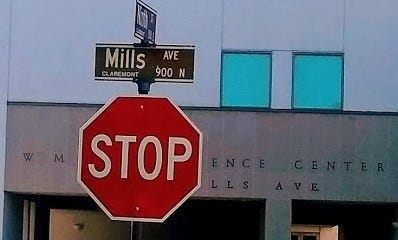
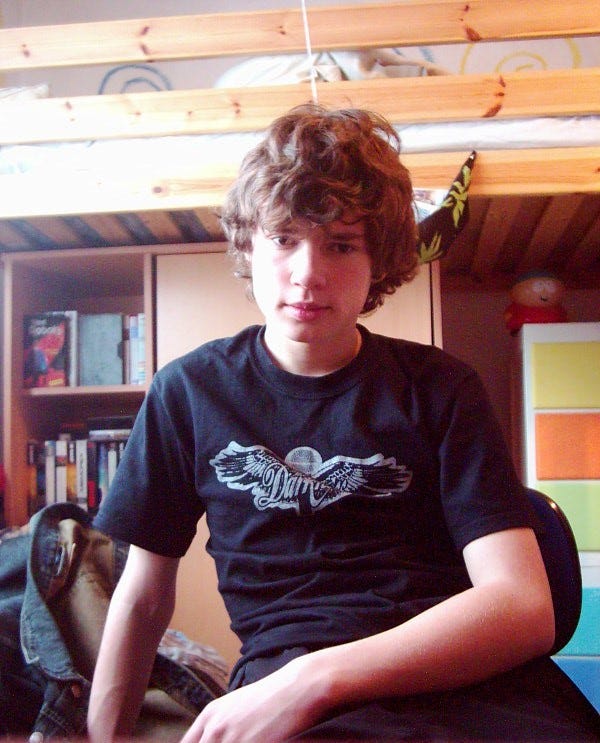
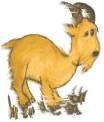
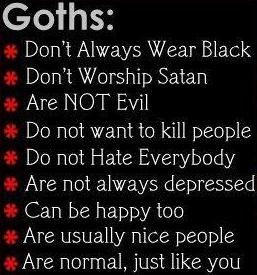


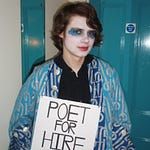
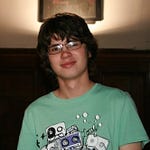
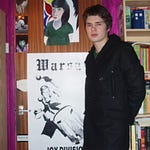

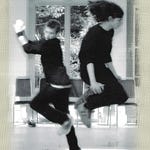
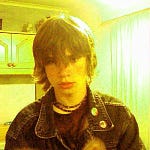
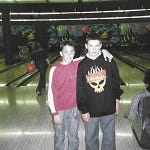
2003: 'Palmcorder Yajna'